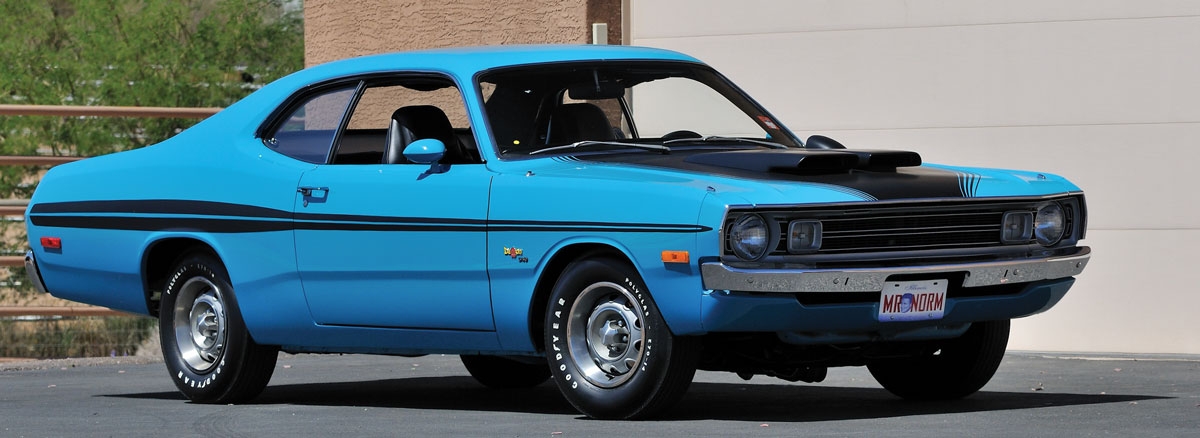Mr. Norm’s street machine
Supercharging was a slick solution that boosted the factory 340 V8 to a stout 360 hp
- Built by Mr. Norm’s Grand-Spaulding Dodge
- The only one finished in Petty Blue
- Authentic Paxton-supercharged Mr. Norm GSS Demon
- Complete rotisserie restoration
- Date code-correct 340-ci V8
- NOS Paxton supercharger specifically for GSS Demon
- Console-shifted Torqueflite automatic transmission
- Black bucket seats, console, factory gauges
- Sport steering wheel
- Black hood accents
- Twin hood scoops, hood-mounted tach
- Solid-state AM radio
- Auxiliary gauges
- Multiple award winner with judging sheets
- Numerous magazine features
- Signed by Mr. Norm Kraus

